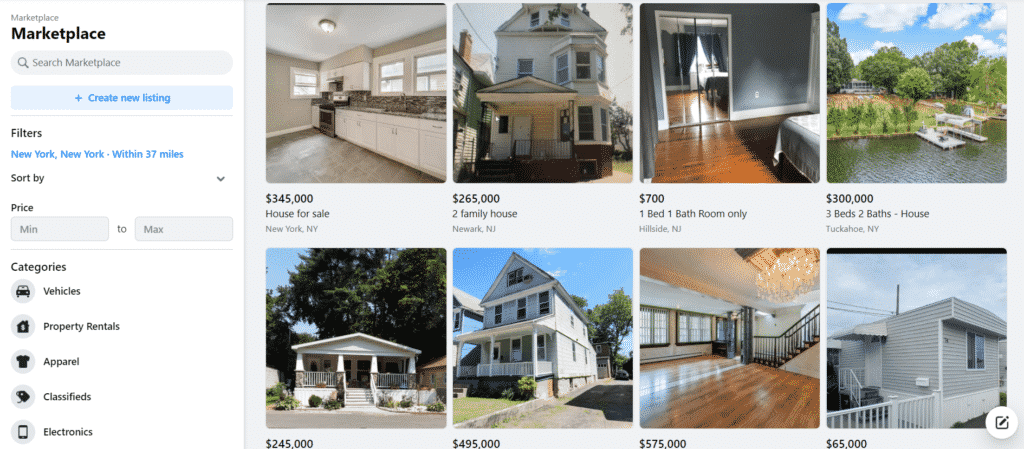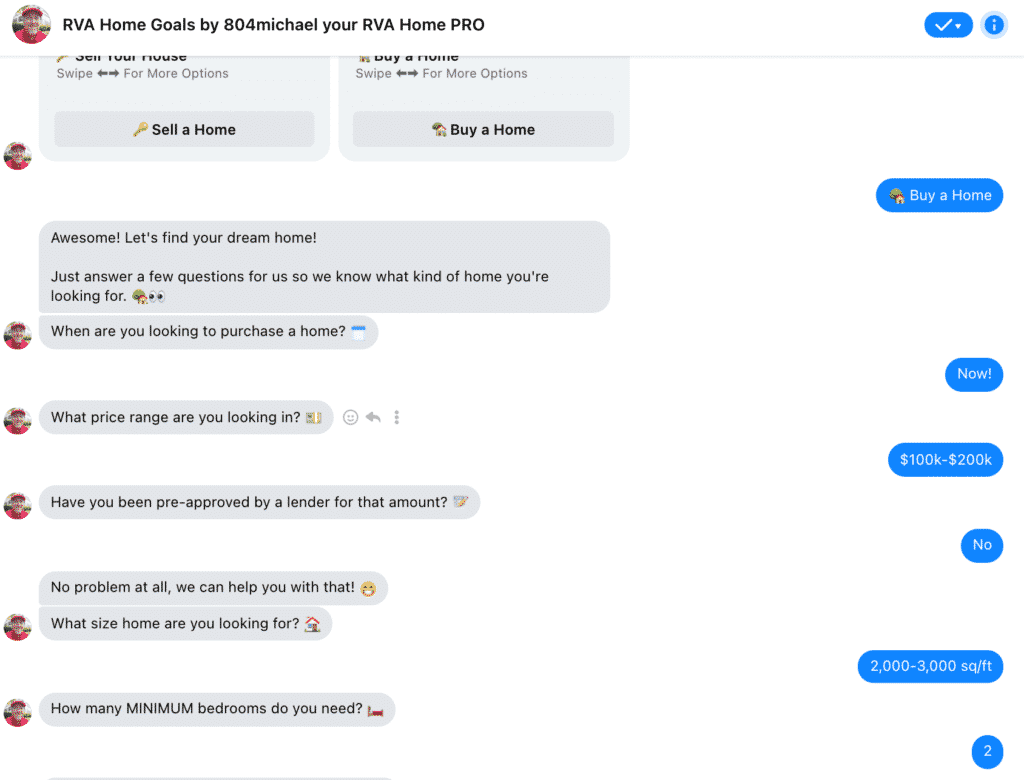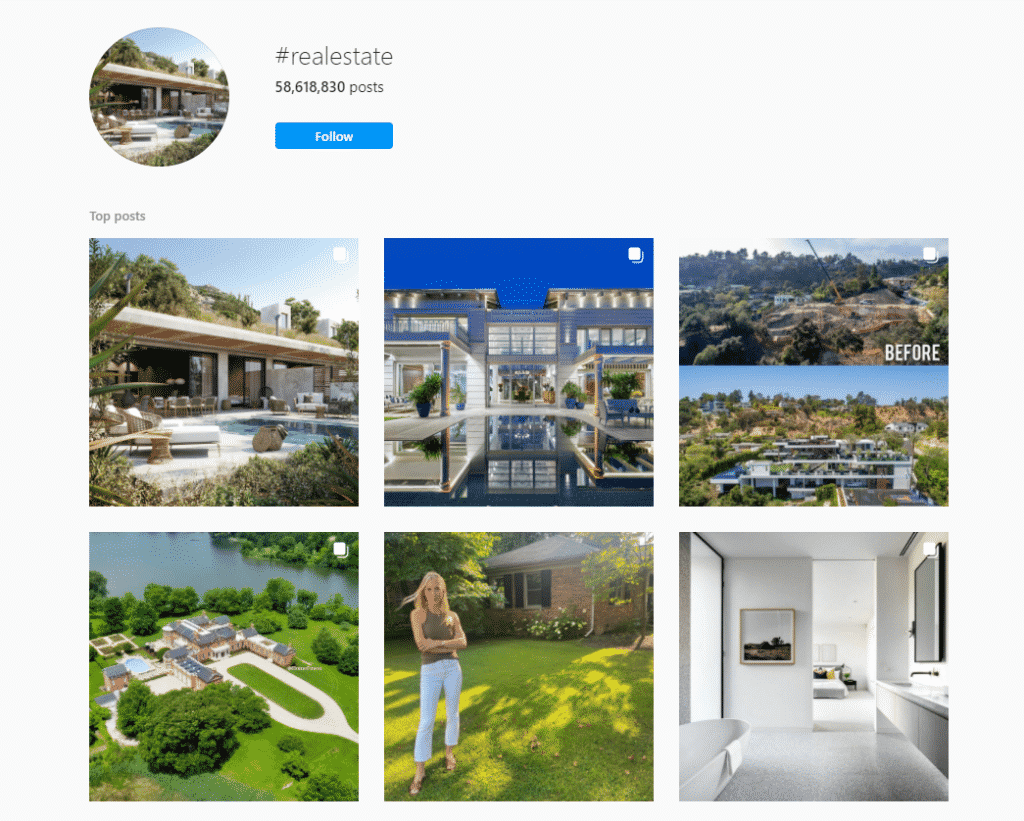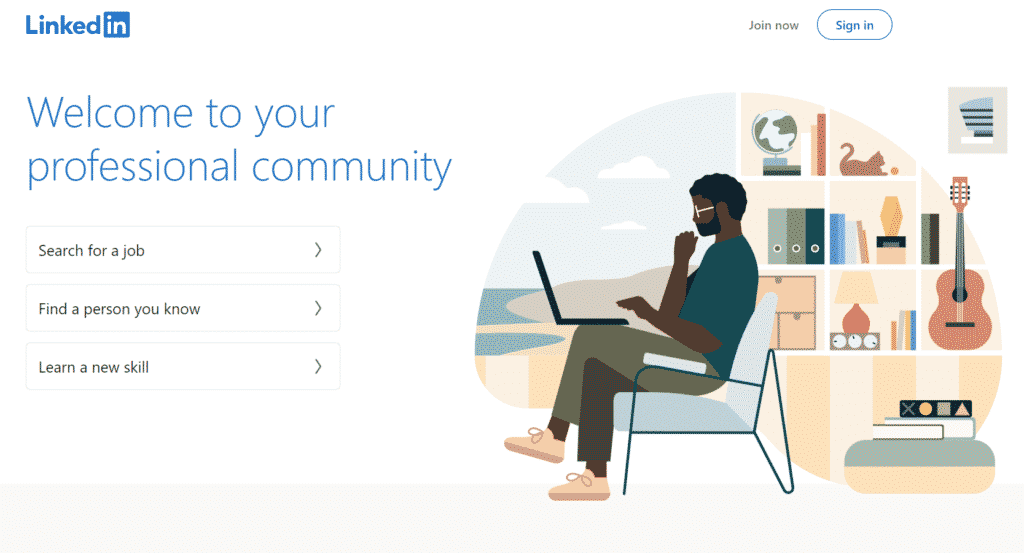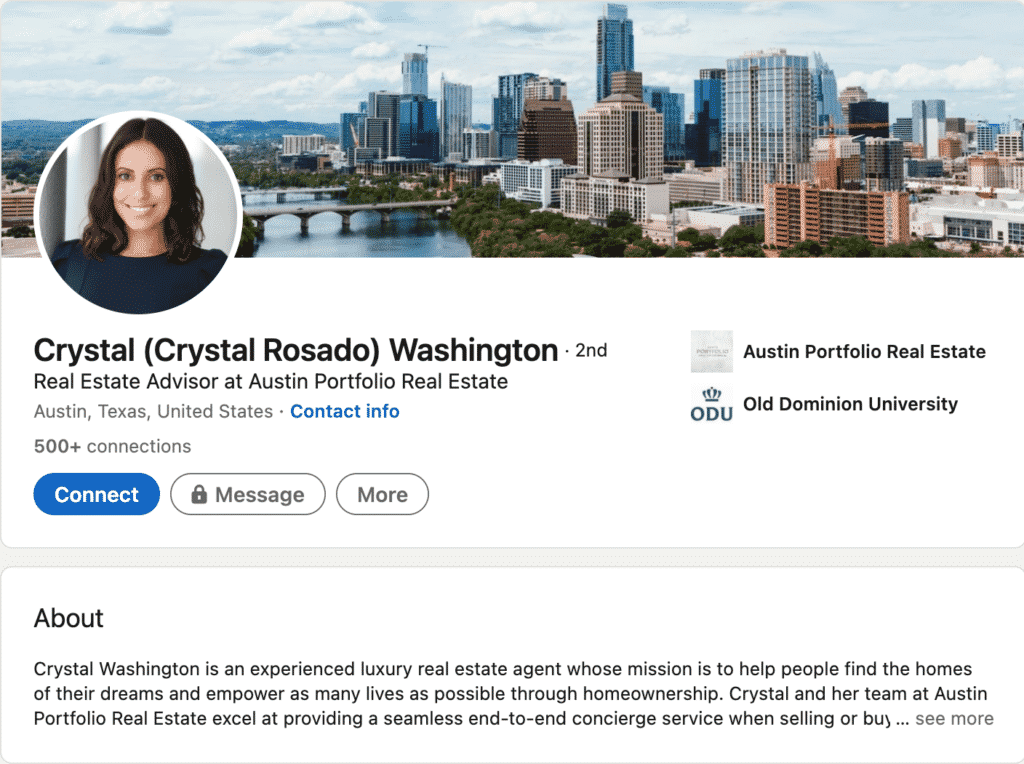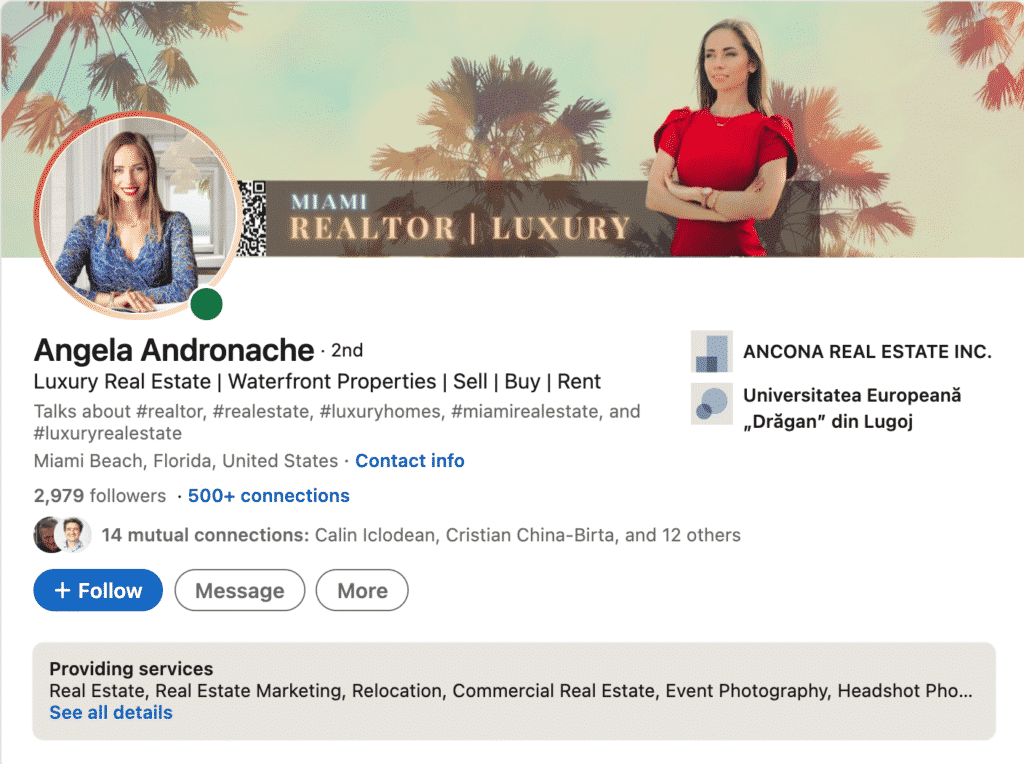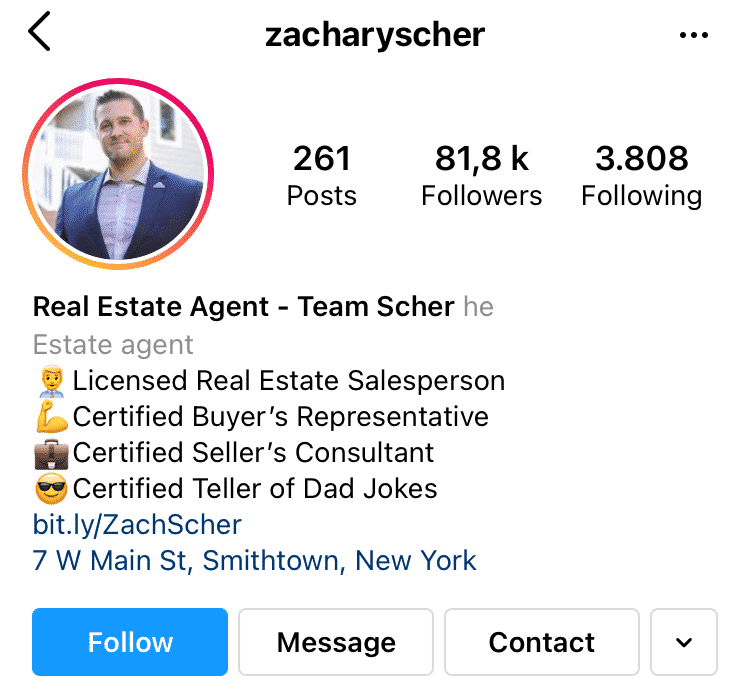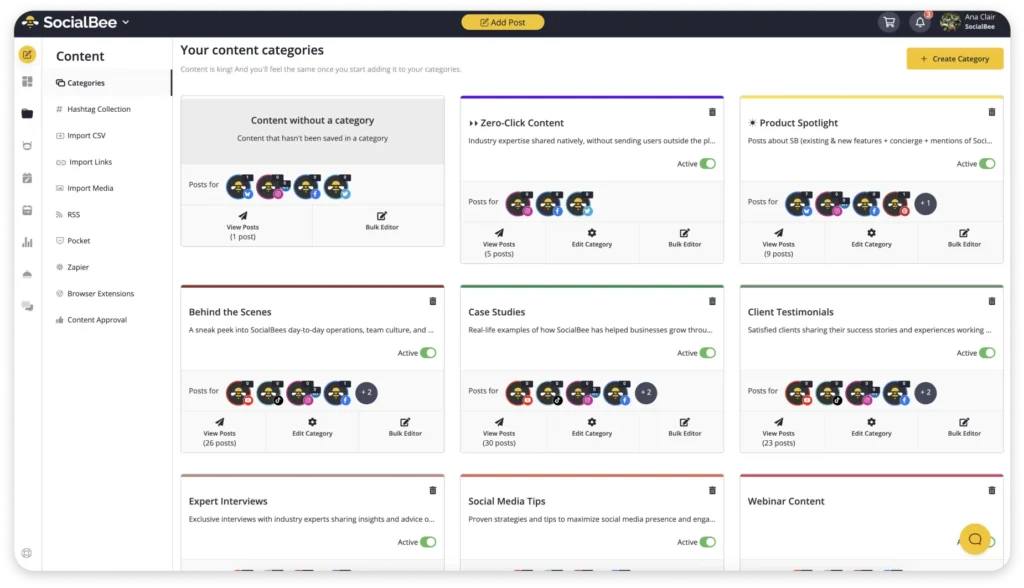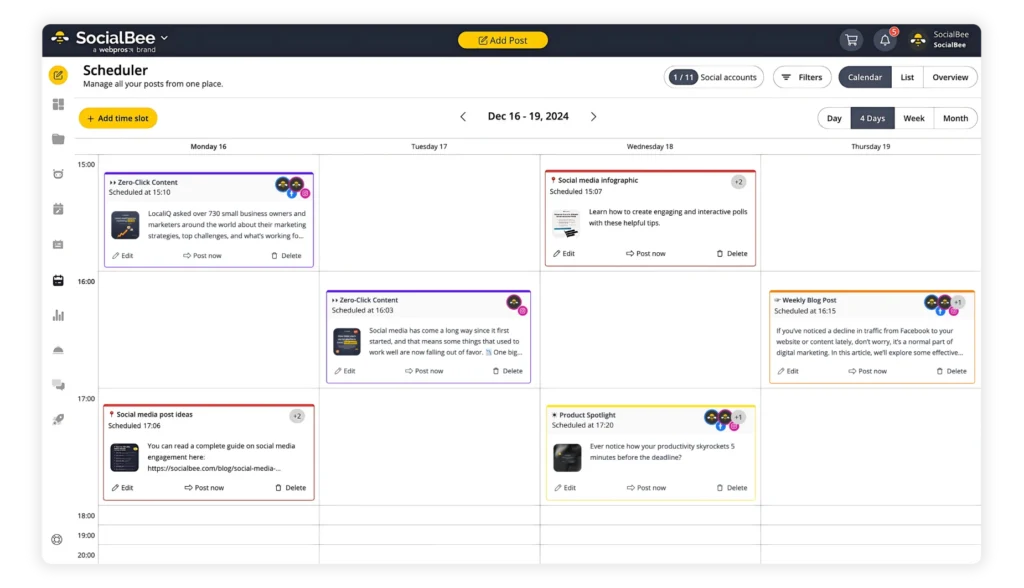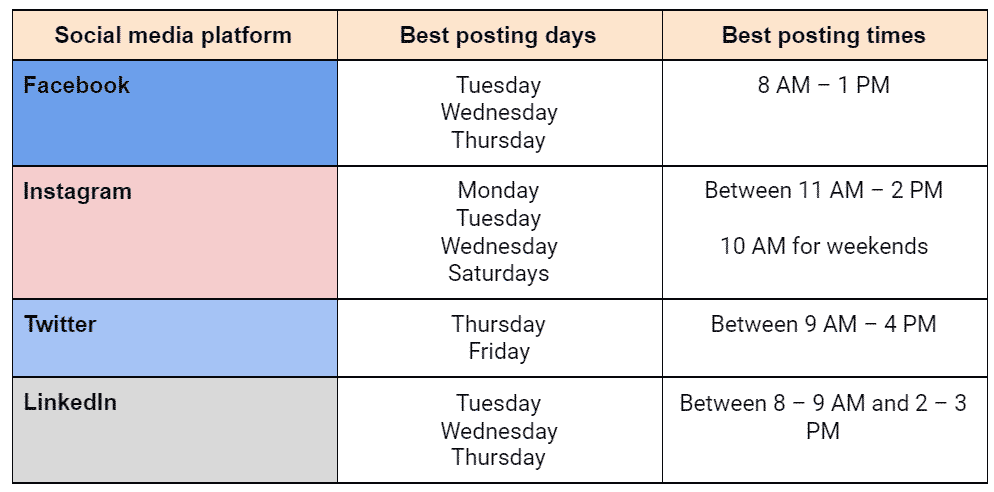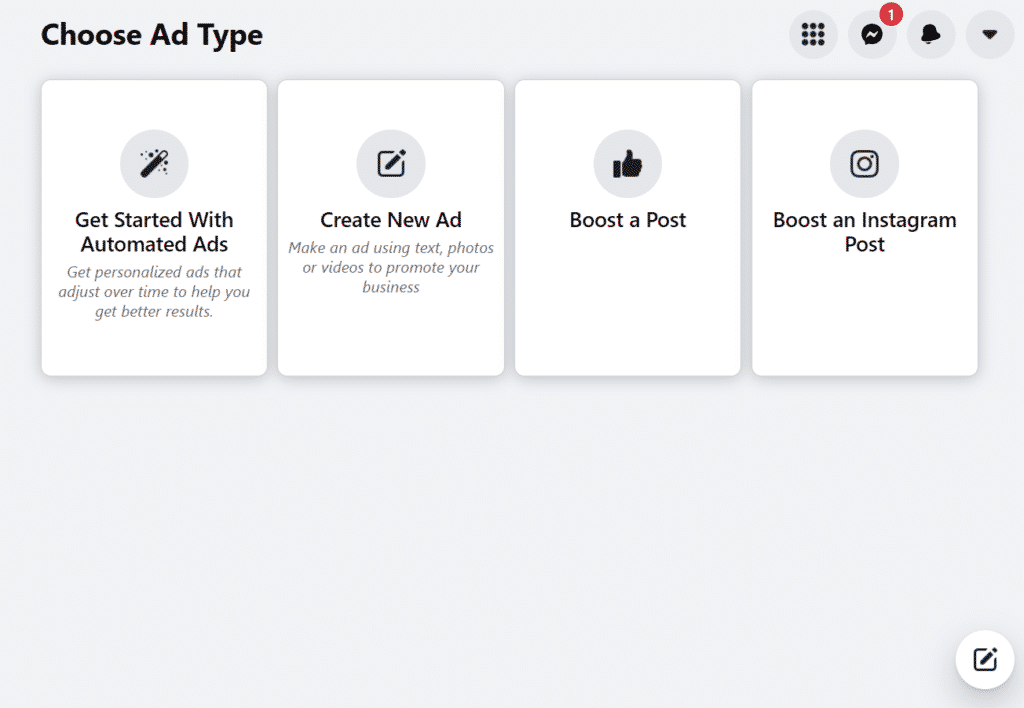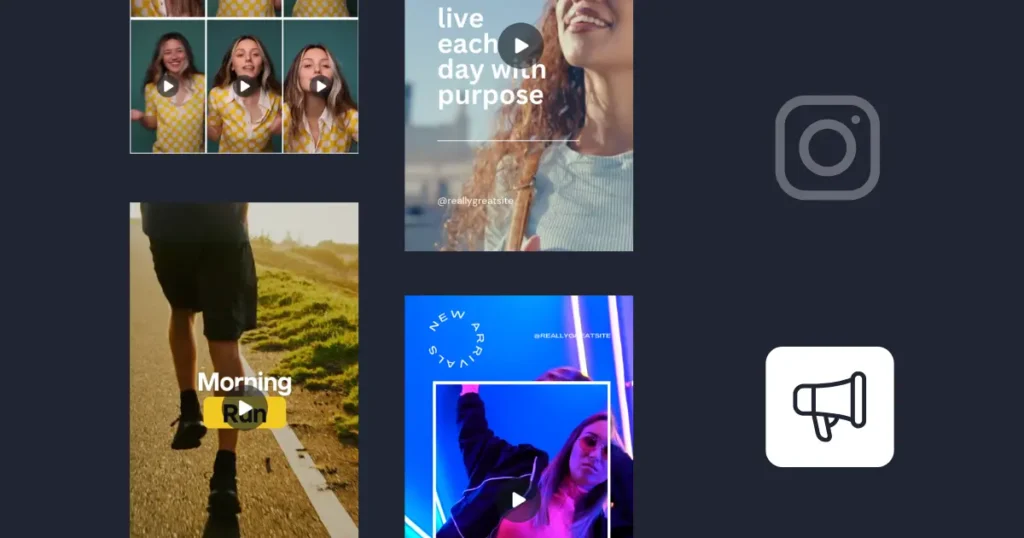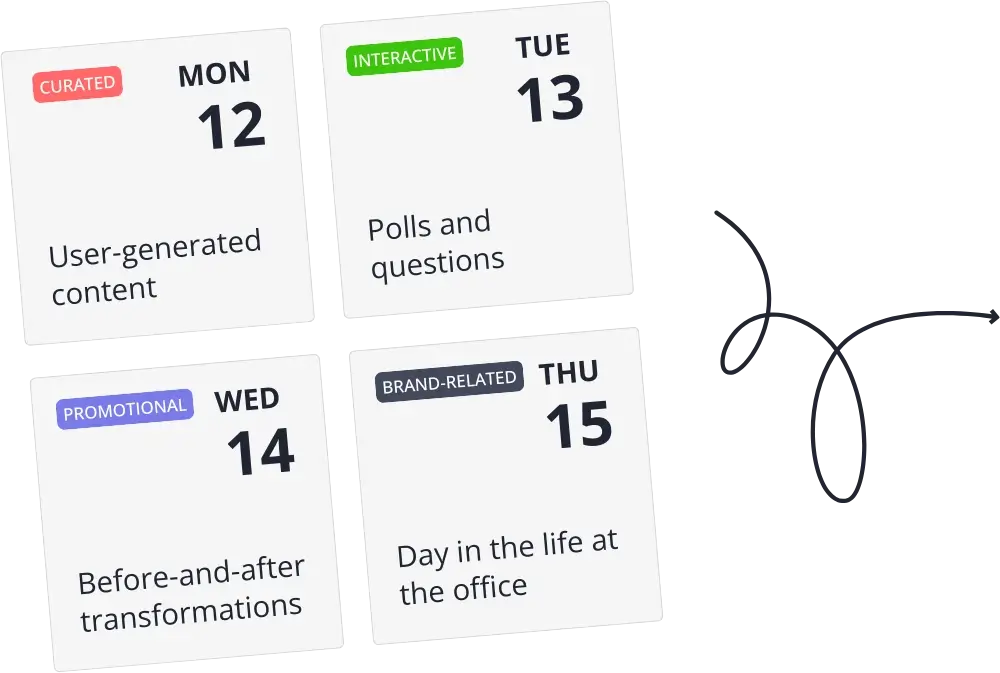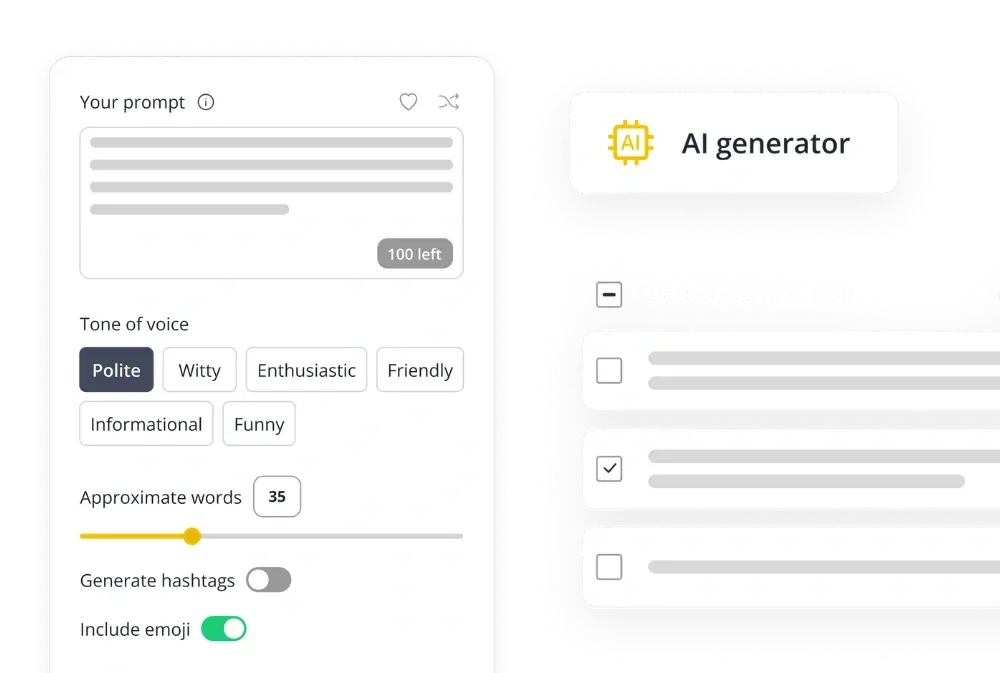
Content Manager at SocialBee
There is no secret that social media has a lot to offer to businesses of any type, shape, and size. But social media is especially important for the real estate industry. In such a competitive field, attracting real estate leads is a challenge.
An overwhelming amount of house buyers spend their time looking for their new homes online.
Statistics show that:
- 79% of people use online resources while looking to buy a house.
- 33% of millennials spend almost 14 hours a week online while searching for a new house.
- 3 out of 4 US users search for local businesses on Facebook at least once a week.
But enough about statistics, let’s find out more about how social media can help real estate businesses attract more and better leads.
Where Do Realtors Get Most of Their Social Media Leads?
Realtors primarily get their social media leads from the following platforms:
- Facebook: Realtors join local groups, create dedicated pages, and use targeted ads to share listings and engage with potential clients.
- Instagram: Realtors post high-quality photos, videos, Reels, and Stories of properties to attract leads.
- LinkedIn: Realtors network with professionals, share market insights, and post articles to establish authority and generate leads.
- YouTube: Realtors create detailed property tours and educational content, using SEO to attract potential leads.
- Twitter: Realtors share market updates, new listings, and engage with followers using popular real estate hashtags.
- TikTok: Realtors produce short, creative videos showcasing properties and real estate tips, participating in trends to increase visibility.
1. Pick Relevant Social Media Platforms
There is no point in creating an account on every social media platform available. What you want to do first is to research your target audience, identify their favorite social media platforms and choose the ones that can bring you the most advantages.
Let’s have a look at the three most important social media platforms for real estate agents.
Facebook is a clear choice for real estate lead generation. With approximately 2.89 billion monthly active users in 2021, Facebook is the most significant social media platform in the world.
Moreover, through Facebook Marketplace you can easily sell properties by:
- Creating mobile-friendly listings
- Including all the information buyers need to know (price, location, details about the property)
- Listing your inventory for free
- Adding images (up to 50)
Another advantage of Facebook Marketplace is that it makes business-client communication much easier. Homebuyers can contact real estate agents directly from the listing through Facebook Messenger.
And with the help of real estate chatbots, you won’t have to worry about managing your inbox. Real estate chatbots can reply to your customers, answer questions and automatically provide suggestions.
Facebook has yet another feature that comes in handy for real estate businesses — Facebook Groups. This social media platform has groups about any topic, interest, hobby, and industry you can think of, including real estate. So, to make sure you get as many real estate leads to see your offer, share your Marketplace listings to relevant local Facebook groups.
The visual nature of Instagram is a perfect fit for posting properties. Carousel posts, Instagram Stories, Instagram Reels are all formats that allow you to experiment with imagery and get buyers interested in what you have to offer.
Nowadays, most people use mostly mobile devices while spending time on social media, so Instagram is ideal for its primarily mobile structure. Another helpful Instagram feature that is especially important in real estate is geo-targeting. For each post you share on Instagram, you can add location information. Based on location, your posts will appear on the search pages of relevant Instagram users in your area.
While we are on the topic of search pages, there is one more thing that can boost the visibility of your Instagram posts — hashtags. Using up to relevant 30 hashtags can expand your audience and increase your post reach.
Although LinkedIn is a business platform that focuses more on B2B relationships than B2C ones, it still has a lot to offer to real estate professionals.
The first reason why real estate agents should be on LinkedIn is that it can help them build a reputation for themselves. To make a career out of a job, you have to become an expert that other industry professionals can come to for advice and information. So, get ready to create a LinkedIn account and showcase your industry experience to your colleagues.
The second reason why LinkedIn is essential for realtors is due to the business opportunities it offers. From networking to getting in contact with valuable clients, hiring new talent, and finding new collaboration opportunities, LinkedIn is great for anything business-related.
LinkedIn is constantly trying to connect people, meaning that it will always try to set you up with buyers and sellers. After all, the success of the platform depends on its ability to form connections.
Being able to see who visits your profile, the platform will then recommend visitors to become your LinkedIn connection, and in this way expanding your network.
Let’s take a look at a well-put-together LinkedIn profile that increases the chances of creating more connections. Our example is Crystal Washington. Here is what she did right:
- She chose a professional headshot for her profile picture and a real estate-related cover photo.
- She added relevant keywords in her title (industry-wise and company name).
- She talks about her experience and what she is doing now at Austin Portfolio.
- She added relevant location and contact information.
Bonus: YouTube
If you’re looking for a channel that’s going to bring you results in the long term, YouTube is the perfect platform for real estate professionals who want to show through videos new houses, the “behind the scenes”, how-to tutorials for picking a house or simply their lives.
2. Optimize Your Social Media Accounts
By optimizing your social media accounts, we mean filling in all the necessary fields and including essential information your clients will need to know about your real estate business. Here are the most important aspects you need to consider while setting up your social media accounts.
Profile/Cover Picture
To keep a professional look and to make sure your customers recognize your business, you must:
- Include images that incorporate your logo and business colors
- Use the same images across all social media channels
Account Name
The account name should be the same as your business name so that customers can easily find you across all social media platforms.
Bio/About Sections
Here you need to add all the essential information your target audience needs to know about your business. Therefore, you must include:
- A brief description – Give a short and clear description of what you do so all the visitors are aware of your business industry.
- Website link – Direct your audience to relevant pages that could bring you more value.
- CTA – Encourage your potential customers to either reach out to you, visit your website, or book a showing, etc.
- Contact information – Don’t let your clients struggle to find your contact information. List your email and business telephone number and help them get in contact with your business.
- Location – The first information clients check before looking for real estate companies is location, so make it clear that you are available in their area.
3. Steal from the Competition
Let’s look at the full half of the glass: competitors are a great source of information and inspiration. And by this, we mean that their social media presence can help you find new content topics and formats and improve your lead generation strategy.
To build a comprehensive analysis of your top competitors, you can create a spreadsheet and include all the information that will help you understand their strengths and weaknesses. Here are some fields you can include in your research file:
- Competitor name
- Links towards their social media pages
- Interesting content topics
- Their best performing posts
- Strengths
- Weaknesses
Besides social media content, competitors can also help you find new potential clients. But how? By going through their follower list and interacting with them. It could be as simple as liking their picture, leaving a comment, or giving them a follow.
Such an initiative will make them aware of your social media account and spark their interest in your business. And since they follow your competition, there are more chances that they are interested in what you have to offer too.
4. Create a Blog
Even though blogs do not belong directly to social media, they can still be part of the content you share on social media.
By starting a blog you establish your brand as a credible source of information. If your potential clients get industry advice from your blog, this means that they already trust you and they have a good reason to choose your real estate services. Also, you might catch the attention of other industry leaders that will be willing to promote your content.
Our suggestion would be to add a share button for all your blogs to make it easier for your readers to share them on social media.
Furthermore, by linking to your blog from your social media pages, you can bring more traffic to your website. To achieve this you must insert internal links to relevant keywords and direct your visitors to your most important pages (other articles, contact pages).
5. Create Engaging Social Media Content
Your social media content is the most important way to attract real estate leads. To achieve social media lead generation success, you have to be an active presence online and create content that resonates with your target audience.
Be Consistent
As with any other aspect of your real estate business, social media lead generation requires work and consistency. That is why we recommend you build a content calendar, create posts and schedule them in bulk for a certain time frame by using a social media management tool. It can be on a weekly/monthly basis, depending on what works best for you.
Each social media platform requires a certain amount of activity. This is detrimental to your reach and engagement levels, and your overall online visibility.
To give you an idea of how active you should be on social media, we created the following table with the best posting frequency for five of the most used social media platforms.
Mix-Up Your Content
Social media is full of distractions. So, you have to keep your audience interested in your content every time you post.
Posting only promotional content will not be enough to create a connection with your audience. To boost your engagement levels, businesses have to create interactive content that will keep them interested.
A great way to diversify your content is through content categories. For example, SocialBee allows users to create posts and organize them in different content categories of their choice. As a result, they can schedule them based on the topic of the post.
Here are some post ideas that can make your real estate content more interesting:
- Property photos
- Video online showings
- A series about your real estate team
- Client testimonials
- Company achievements
- Industry news
- New listings
- Tips on how to choose a property
- Questions and polls
- Surprising statistics
- Infographics
- Q&As
- Memes
- Holiday related posts
- Behind the scenes (team interviews, employee of the month)
Experiment with Posting Times
Every segment of your target audience is different. Until you figure out what is the best time to post you have to experiment a little bit. Based on your audience research (work schedule, interests, preferred social media platforms), try to find out when and where they are usually online.
You can also use your social media analytics as a source of information. Monitor your reach and engagement levels, and learn from your best-performing posts.
A great way to have your content organized and easy to monitor is by using a social media management tool like SocialBee. From creating, scheduling, posting content, to having access to insightful analytics, you can handle all your social media platforms from one dashboard.
If you are just starting out and don’t have access to specific analytics, you can get started by posting according to best practices. Let’s have a look at the recommended posting time for the most popular social media platforms.
6. Use Social Media for Customer Service
Social media has revolutionized the way businesses and consumers interact. Nowadays, consumer feedback is more important than ever.
Good news travels fast, but bad news travels faster. So, providing the best services to your customers is a must if you want to have a great reputation online and offline.
Through their social media accounts, businesses don’t just interact with customers. But they also manage reviews, monitor feedback, and provide customer service.
To make sure your customers receive the best customer service a business must:
- Reply to all comments – either bad, good, important, not important
- Prioritize negative feedback/reviews
- Respond to messages promptly
Quality customer service shows that you are trustworthy and that you treat your customers with respect. Positive experiences and customer care are the best ways to increase customer retention rates.
7. Run Social Media Ads
This might not be surprising, but social media ads are highly effective and can generate plenty of valuable real estate leads in a short time frame.
Ads have become so specific that they can target users based on location, demographics, preferences, behaviors, and connections. And the key to getting great real estate leads is to get as specific as you can with your targeting.
Investing in ads is like investing in a pair of quality leather boots. They might require a little more money, but they won’t let you down.
To make a great performing ad, you have to:
- Target a specific group of people
- Make it visual
- Write engaging text
- Include a strong CTA
- Link to important pages
- Use retargeting tools
Lead Generation Social Media Ads for Real Estate
When it comes to ads, our recommendation for real estate agents would be to create a lead generation campaign. To make it more effective, you should add a lead form to request your audience’s contact information in exchange for your lead magnet.
You can use a home buyer guide, real estate market analysis, or any resources you have available that your audience might find useful. Ideally, you should use a downloadable document as your lead magnet.
However, you can also use a free consultation as a lead magnet, but in this case, the form would only help with lead qualification.
Here is how you can create a lead generation campaign with a lead magnet:
- Choose “Lead Generation” as a marketing objective for your ad campaign.
- Define your Audience, Placements, Budget & Schedule, Format & Media, Text & Links.
- At “Question Format”, choose “Instant Form”.
- Decide what contact info you’d like to collect.
- Decide if you want to have people download the resource directly or to “Visit Website” (for better tracking).
Before You Go
With the help of social media, you don’t have to wait for customers to come to you. Now you can go to them. Use your online platforms to show off your listings and present your professional expertise.
Include today’s social media tips in your lead generation strategy, and you’ll be able to grow an impressive follower base, create a connection with them, and turn them into paying customers.



